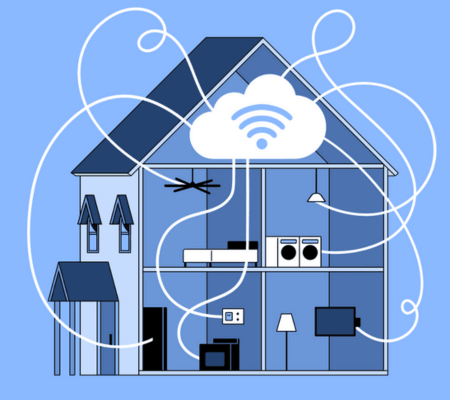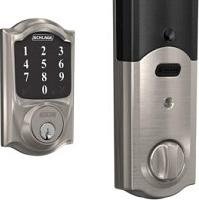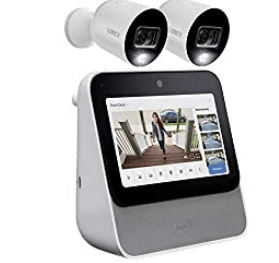In the heart of innovation, behold the IP camera—a visionary marvel that transforms ordinary moments into extraordinary stories. With a digital soul and an artist’s eye, it captures the world’s essence in pixels that dance with vibrant clarity. Connected through the web’s tapestry, it whispers its tales across distances, bridging hearts and spaces.

A sentinel of pixels and dreams, it stands unwavering, urging us to embrace the future where art and technology entwine, and where every frame becomes a canvas for inspiration.
Table of Contents
ToggleHow Does An IP Camera Work?
The lens focuses the image on the matrix. The matrix converts the color into an electrical signal. The signal goes to the processor for processing color, brightness, and more. The video stream goes to the compressor. The compressor compresses the stream – now the data is ready to be transmitted to the network via the Ethernet controller.
Each IP camera has its own IP address transmitted with the connection and used to synchronize the camera with the recorder: Using a command or a special program, the recorder uses the camera’s IP address and connects using it. Without an IP address, it is impossible to configure the equipment to work together and access the IP camera from a mobile device.
Examples of IP Camera
Wansview Wireless Security Camera, IP Camera 1080P HD, WiFi Home Indoor Camera for Baby/Pet/Nanny, Motion Detection, 2 Way Audio Night Vision, Works with Alexa, with TF Card Slot and Cloud Price: $40 only
Best product
What are IP cameras connected to?
The IP camera broadcasts the video stream to the registrar (server), personal computer (if the appropriate software is available), and the cloud (SaaS solution; software as a service).
Several IP cameras are connected to the recorder through a router or switch, or each to a separate port (if any). A router or switch that supports Dynamic Host Configuration Protocol automatically distributes addresses and other network settings.
The IP camera is low-current equipment. It receives power from the adapter, PoE switch, or DVR if it supports PoE technology. PoE: power over Ethernet, power supply over Ethernet, over twisted pair simultaneously with data transmission.
Connecting IP cameras to a PC depends on the number:
If there is one camera, they are connected to the LAN interface of the network card, if there are several, a switch is connected to the LAN, and IP cameras are already connected to it, after which a network connection is made with each new network address assigned.
Communication Mechanisms, Networks, and Protocols
IP cameras operate over the TCP/IP protocol stack. TCP / IP is a network model with four levels of data passage: application, transport, network, and network access.
Distribution of Protocols by Levels:
- Applied – HTTP, RTSP, FTP, DNS, etc.
- Transport – TCP, UDP, SCTP, DCCP, etc. (RIP, OSPF-type routing protocols running over IP – part of the network layer).
- Network – IP (auxiliary protocols, such as ICMP and IGMP, work on top of the network protocol but belong to the network layer, and ARP is an independent auxiliary protocol that works on top of the link layer).
- Network access layer – Ethernet, IEEE 802.11 WLAN, SLIP, Token Ring, ATM and MPLS, the physical environment, and information encoding principles, T1, E1.
Transport Protocols
TCP is a guaranteed protocol (in the first tests, the packet traveled 150,000 km without losing a single bit of information), using commands, it re-establishes a connection, after which it starts data transfer; monitors the safety of data and its sequence, regulates the transmission speed so that the data is not transmitted more intensively than it can be received.
Corrects errors – send a duplicate if the packet is lost, and correct the error if two identical packets arrive at the same address.
RTP is a real-time traffic transfer protocol. Provides for data synchronization and correction of the packet delivery sequence.
UDP is an alternative to TCP but does not establish a preliminary connection, but immediately starts broadcasting. Does not monitor data receipt and does not duplicate in case of recovering a lost packet. Less reliable, but faster.
Compatibility Protocols
Devices from the same manufacturer are compatible by default. IP cameras support application protocols for interoperability with third-party devices. Mainly RTSP and ONVIF.
RTSP is an application protocol for the remote control of an IP camera, with a description of the flow control commands. Provides only management of IP cameras by the server. Not related to compression, packets, or transport protocol definition.
Data transmission as such is not part of RTSP – there is a standard real-time transport protocol for this. RTSP requests go separately from the stream – through a special port.
Requests:
- Announce – Update content description data.
- Describe – a description of the content.
- Options – supported methods.
- Play – start transferring content.
- Pause – temporary stop of transmission.
- Record – the content is recorded by the server.
- Redirect – redirect to other content.
- Setup – installation of the transport mechanism.
- Get_parameter – Requests the specified parameters from the server.
- Set_parameter – setting server parameters.
- Tear down – stop the thread, and release resources.
ONVIF is the modern standard. It is a combination of ready-made technologies and protocols (including RTSP) adapted to IP video surveillance. Within the specifications, four profiles have been developed: Profile S for video sources, Profile C for access control systems, Profile G for video recording devices, and Profile Q for out-of-the-box compatible devices.
The Profile S specifications define:
- Network interface configuration.
- Device discovery using the WS-Discovery protocol.
- Manage camera profiles.
- Streaming setup.
- Event processing.
- PTZ control.
- Protection (access, encryption).
The internal archive IP camera meets the requirements of two specification profiles.
Eufy Security Solo Indoor Cam C24, 2K Security Indoor Camera, Plug-in Camera with Wi-Fi, IP Camera, Human & Pet AI, Voice Assistant Compatibility, Night Vision, Two-Way Audio, Home Base not Compatible Price: $42
Ways of Signal Transmission by IP- Camera
There are three ways: wired, wireless, and hybrid (two ways: wired and wireless).
A wired connection provides stable and high-speed transmission but requires the laying of networks limited in length by the type of cable: 100 m for twisted pair, 500 m for coax, and 100 km for fiber (excluding repeaters or switches).
For wireless broadcasting, a Wi-Fi module (most often) or a 3G / 4G module is built into the IP camera. The transmission range is limited and reduced due to physical obstacles in the direction of the router and electromagnetic interference.
Ethernet: IP Camera Communication Medium
The IP camera operates on an Ethernet network, a technology that connects devices to a local area network (LAN) for packet data transmission. A video surveillance system built on the basis of IP cameras is sufficient for an ordinary local office network that habitually connects computers.
Ethernet is described by the standards of the IEEE 802.3 group. The standards define the frame format and protocols for media access control at the data link layer of the model for the interaction of devices with each other.
A short list of network modifications of standards (the maximum segment length is indicated)
1. Over Twisted Pair:
- Ethernet 10 Mbps: 10BASE-T – Cat. 3 and above, 10BASE-T – two twisted-pair Cat. 3 or Cat. 5 (100 m).
- Fast Ethernet, 100 Mbps: 100BASE-T – Cat. 3 and Cat. 5 (100 m).
- Gigabit Ethernet, 1000 Mbps: 1000BASE-T – Cat. 5e (100 m).
- Intermediate Ethernet standards, 2.5 Gb / s and 5 Gb / s, respectively: 2.5 GBASE-T and 5GBASE-T – Cat 5e and Cat 6 (100 m).
- 10 Gigabit Ethernet, 10 Gbps: 10GBASE-T – cat. 6 (55 m) and 6a (100 m).
2. By coaxial cable at a speed of 10 Mbps: 10BASE5 – RG-58 (up to 185 m), 10BASE2 – RG-8 (500 m).
3. Through an optical cable (single-mode – a fiber with the main core diameter 7 ~ 10 times the wavelength of light passing through it, multi-mode – a fiber with a large core diameter that conducts light rays due to total internal reflection):
- Ethernet, 10 Mbps: FOIRL – up to 1 km, 10BASE-FL – up to 2 km.
- Fast Ethernet 100Mbps: 100BASE-FX – Multimode fiber, 400m/2km (half/duplex*), 100BASE-SX – Multimode fiber, 2km/10km (half/duplex), 100BASE-FX WDM – single-mode fiber (predominant use – transceivers).
- Gigabit Ethernet, 1000 Mbps: 1000BASE-SX – multimode fiber (500 m), 1000BASE-LX – multi mode fiber (550 m), single-mode fibre (5 km), 1000BASE-LH – single-mode fibre (100 km).
- 10 Gigabit Ethernet, 10 Gbps: Multiple standards, 26 m to 40 km.
Faster Ethernet is not yet used in video surveillance systems.
*Duplex method of data exchange – sending and receiving simultaneously via two communication channels, half-duplex – alternately via one channel.
For Sale Security Cameras Wireless Outdoor – WiFi Light Bulb Camera – 1080P Pan Tilt Wireless 2.4Ghz 360 Degree E27 Panoramic IP Camera with Camera Audio Security Camera System Price $29 
Possibilities of IP cameras for video surveillance
The main difference and the first advantage of a network video surveillance camera is the digital video signal from the photosensitive matrix to the server.
The main advantages of IP cameras:
- System scalability: multiple streams run over a single cable.
- The picture with high detail.
- A wide range of digital and hardware image enhancement features (WDR, BLC, HLC, EIS, DIS, DNR, etc).
- Stability of image quality during the broadcast.
- Low interference.
- Transmission security is provided by encoders and encryption technologies.
- High speed – up to 50 fps and above, which significantly increases the information content of the picture.
- Broadcast signal without loss of image clarity.
- Alarm processing systems for timely notifications by e-mail or smartphone.
Setting up and controlling the camera from a distance.
Video analytics
Analytical functions are laid in IP cameras – from a simple motion detector that analyzes changes in the frame, to face recognition, license plates, and behavior analysis.
Compression
Unlike traditional CCTV cameras, IP cameras compress the stream and process it on board with video codecs. Traditional ones transmit an uncompressed signal, loading the server, and requiring high power. An uncompressed analog signal needs to be converted – with an inevitable loss in quality. IP cameras are not limited to analog video standards.
The most common video codecs are:
for a static image – JPEG, dynamic (in motion) – MJPEG, and proprietary (paid) – H.264, H.265. H.265 demonstrates the strongest compression, but it is most effective at high resolution, and is practically not needed for 2 MP. Developers continue to improve codecs and intelligent compression technologies.
Internal video archive Edge Storage
Edge Storage – local storage of information, video recording on the built-in memory card; creation of a double archive for insurance in case of a connection break.
If necessary, the IP camera works autonomously – without connecting to a DVR or PC. The IP camera has a slot for a microSD/SDHC/SDXC memory card or a USB port for connecting a flash drive.
Multi-Stream Broadcast
IP cameras broadcast not one stream, but several – at least two streams: the mainstream in full resolution for recording and a lower resolution substream for the monitor.
Most IP cameras support 3-streaming – for recording, for a monitor, for a mobile device, and some models support up to ten streams. Separate threads are allocated to different detectors to reduce the load on the server and the network.
Corridor Mode
Many IP cameras support corridor mode – vertical video display, 9:16 instead of 16:9. In this mode, it is convenient to view the survey of the corridor, tunnel, and so on.
Mode support is specified in the specification of the IP camera. If the corridor mode is not specified, the function cannot be obtained pro-grammatically – the required resolution is set at the hardware level.
Audio
Basically, IP cameras are equipped with one or more audio inputs and audio outputs, transmit audio files to the recorder, and receive an audio signal.
Some models already have a built-in microphone, but each IP camera with audio input can be connected to a professional omnidirectional, bidirectional, or unidirectional microphone (depending on the task) if necessary.
There are analytical functions that work specifically with sound, which determine the excess or underestimation of the sound threshold (the threshold is set by the user in the settings), scream, glass breaking, gunshot, explosion, and other sharp sounds and create alarm events with sending to the system.
Security Cameras Wireless Outdoor – WiFi Light Bulb Camera – 1080P Pan Tilt Wireless 2.4Ghz 360 Degree E27 Panoramic IP Camera with Camera Audio Security Camera System
Price $24











